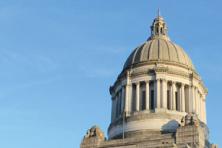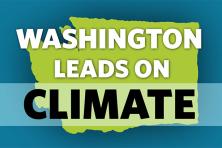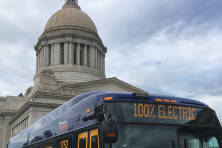The weight and the urgency of tackling climate change can be—no, is—overwhelming. How do we bring about a clean energy revolution unlike any we have ever seen, ending our dependence on burning things dug up out of the ground and instead developing a symbiotic relationship with ecological forces? How can we upend the stranglehold owned by fossil fuel megagiants, that is estimated to be worth $20 trillion, a feat humanity has achieved but once in our collective history? And if we can repeat this once-in-an-epoch achievement, can we do it with truly shared prosperity and justice?
There’s not a single study that can tackle these questions alone, but there are a multitude that seek to find that narrow path through the dark woods. The office of Governor Jay Inslee just rolled out a new one to show how Washington gets there. I’m not going to go deep here with details about electricity demand, sources of biogenic energy, and heat pumps (you can find all those specifics at the state’s website--and really, it’s a fascinating read). Instead, here are three takeaways:
1.We can do it. For real.
The modeling set an ambitious goal of energy-related carbon reductions of 86% below 1990 levels by 2050. That’s ambitious no matter what, but especially considering that as of today, we’re about 7% over that initial baseline. And they got there!
Through three different scenarios, all relying on heavy electrification, efficiency across all energy uses, and replacing fossil fuels with renewable sources, the path to a cleaner and more sustainable economy is there.
2.It’s not that expensive.
It won’t be free, that’s for sure, but getting to a healthier economy isn’t going to break the bank either. The most expensive of the scenarios, which relies on replacing natural gas with non-fossil alternatives, will have a net cost of $80 billion—over 33 years. That tops out at 0.6% of gross state product in the worst year, and none of that counts the economic benefits of this investment (more on that in a second). The scenario that depends on electrification as the primary pathway costs about $38 billion over the same period.
Most interesting of all though is that both of those scenarios are doable with more-or-less currently available technology. A third scenario, which makes a range of conservative assumptions about technological innovation, paints an even more encouraging picture. If we are able to realize these ideas, the innovation case projects a net savings of nearly $50 billion compared to relying on the same old, tired, business as usual options.
3.There is an economic opportunity, and not just in our cities.
One of the most amazing insights from the study is that Washington can shift to self-reliance in its energy needs. Rather than relying on setting fire to oil from Alberta to get around town, rather than burning fracked gas from North Dakota to keep our homes warm, rather than poisoning the air in eastern Montana to turn on the lights—we can generate so much more energy in our region by relying on the sun, the wind, the rivers, the oceans, our waste, and….cows.
A core solution that the report relies is the creation of renewable gas to replace fossil gas—creating new revenue streams for the big dairy operations we have in Whatcom and Yakima counties, and the wastewater and landfills that our taxes currently pay for across the state. We can replace jet fuel and diesel with renewable alternatives, including electricity which costs a third the price, and renewable liquid fuels which can be generated from forest and agricultural waste—creating new revenue streams for Washington’s historic forestry and agricultural sectors which are so critical for our rural communities, especially in southwest and eastern Washington.
The solutions to climate change don’t rely on clever tricks and software developed in Seattle and Redmond—they rely on making all of our communities a part of our energy generation landscape, not just energy consumption. And by doing so we can support economic drivers for both big cities and small towns. Every part of the state has something to contribute—and stands to benefit.
The Governor's study points to a range of great and exciting opportunities like this. If you’re like me, the analysis and the modeling is exciting (confession: I’m a dork), in which case really—you should read it. There’s reason in fact to believe that these scenarios miss important pathways that can bring this future even closer to our grasp.
But even with these opportunities, this is not a done deal. It’s not the new business as usual. The good news is the same news we’ve been talking about for years—it can be done. The bad news is also the same news—it won’t happen for sure.
We have the technical roadmap, so now let’s bring the policy framework to implement and political will to demand it. We need a collective commitment to change—not just in Olympia but across the state. We must stop making it worse, and we must demand that things get better—with our voices, our votes, our solidarity and our pocketbooks.





